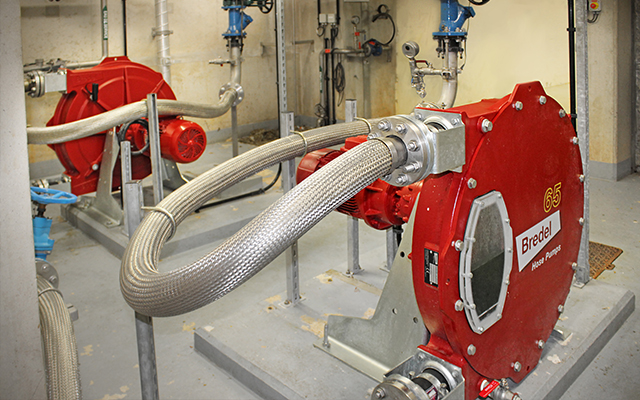Few will have failed to notice the increasing number of headlines relating to ‘fatbergs’, enormous congealed lumps of waste matter that are clogging sewers in major cities around the world. Tackling the problem at source requires a programme of education in what can and cannot be placed in the wastewater system. For now, however, the focus is on how best to remove fatbergs and restore full flow and efficiency to sewer networks. Effective pump technology able to handle the vast array of solids found within fatbergs, is integral to these efforts.
As the name suggests, fatbergs principally comprise fat, oil, and grease (known by the acronym FOG in the wastewater industry). These substances mix with general product waste such as wet wipes, sanitary waste, nappies, tights and plasters, and congeal into large masses that are able to clog wastewater pipe networks and, if not removed, cause raw sewage flooding at street level.
Sizing up the problem
Size, weight and substance are the main issues that sewerage workers face when tackling fatbergs. To emphasise the scale of the problem, in September 2017 a 250-metre long fatberg weighing over 140 tonnes was found under the streets of Whitechapel in East London, where it was choking 80% of sewer flow. Even working seven days a week, destroying and removing it took two months.
There are known to be 10 similarly large fatbergs in London right now and hundreds of smaller ones across the country. Anyone living near a restaurant should be particularly concerned. Recent research by Thames Water mapped the locations of fatbergs in proximity to restaurants, concluding that those living within 50 metres of a fast-food outlet are eight times more likely to be flooded with sewage.
Success in Paris
Last year, WMFTG visited one of France’s largest public wastewater treatment agencies, which wanted to discuss issues being experienced with existing pumps at one of its wastewater treatment works. The Agency had been witnessing major problems with the recovery of floating greases from two tanks served by rotary lobe pumps connected to crushers. The pumps were clogging because the greases were loaded with a high concentration of waste matter.
Typical to many sewage plants, wastewater at the works is first delivered to treatment pools where fat is separated using a principle of air impulse before being forwarded into classifiers. In this instance, fat, heavily loaded with waste such as wet wipes, was obstructing and even entirely blocking the rotary lobe pumps. The situation was deemed serious as there was a possibility that wastewater could overflow into the nearby River Seine.
One option was to hire a sewage disposal truck to drain the waste reservoir. However, at a cost of circa €4000, plus costs associated with the almost monthly pump and/or crusher repairs, this option was deemed financially unviable on a long-term basis. Instead, the Agency began to consider alternative solutions and, after discussions with WMFTG, commenced trials with a Bredel pump.
Following a successful trial period, two self-priming Bredel 65 pumps were ordered to replace the rotary lobe pumps and crushers. The pumps are today busy transferring floating fat from the treatment pools to the classifiers at a flow rate of 7 m3/h, a speed of 17.5 rpm and 10 bar pressure. There have been no issues in the 12 months following installation. Furthermore, the cost of the waste removal trucks and previous pump/crusher repairs has now been eliminated, representing a considerable saving.
Destroy and remove
There are different ways to eliminate a fatberg, but the most common method is to break it up using high-pressure hoses and suck up the remnants into transportation tankers.
Of course, identifying the right pump for handling fatty substances laden with various solids is paramount. Here, hose pumps based on peristaltic technology, such as the Bredel range offered by Watson-Marlow Fluid Technology Group (WMFTG), score heavily. With no seals, valves or moving parts in the flow path, the risk of clogging, leaking or contamination is eliminated entirely. This makes them ideal for viscous sludges or slurries containing solid matter.
Fatberg recycling
This is good news not just the wastewater treatment agency and local residents, but for the environment too, which has now been spared a potentially extremely hazardous sewage flood. Indeed, the importance of tackling fatbergs and general FOG has grown in stature with the notion that it could be used as a source of fuel.
Under such plans, fatbergs would be dug out of sewers and transferred to a specialist plant, where they would be processed and transformed into bio-diesel. Unusable items such as wet wipes would simply be separated and discarded in the appropriate manner.




